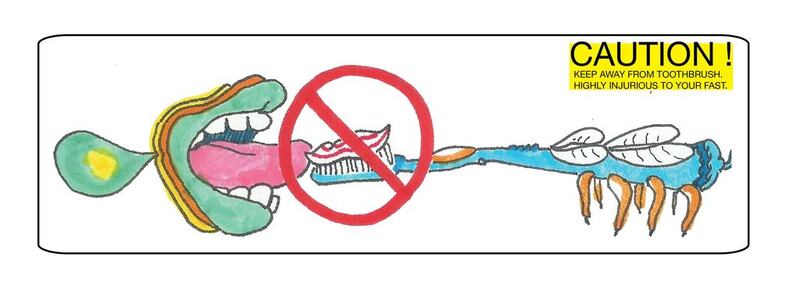In the centre of the Gallery of Light is a comfy black sofa facing a TV screen attached to a wall covered in wallpaper decorated with comic strip drawings of armchairs, televisions and crescent moons. It is an installation by Khalid Mezaina, and is part of a group show at Dubai Community Theatre and Arts Centre (Ductac) called Ramadanization.
The purpose of the show is to invite artists to reveal what Ramadan means to them, and the impact of commercialisation on the holy month. The mock-up living room depicted in Mezaina's work – Television of the Month – is entwined with the artist's personal memories and most importantly, is interactive, inviting visitors to sit down and reflect upon Ramadan traditions and how they have evolved.
“Having witnessed the massive commercial media tide associated with Ramadan for over 20 years and how it has gradually shifted viewers’ practices, the artists [in this show] are playfully investigating elements of belonging and disengaging in a rapidly changing Muslim world,” says Muhannad Ali, curator and gallery manager.
"I have been in Dubai for three years and I notice that many people eat and sleep too much and watch too much television during this month. Ramadanization is an effort to create an interesting project and encourage people to get out of that routine and to engage," he says.
Despite tackling a weighty topic, the exhibition has a playful feel, making it approachable and enjoyable.
Safwan Subzwari, a Pakistani who grew up in Saudi Arabia, has created the Fast Safety Manual. It replicates the style of an in-flight safety manual with dos and don’ts regarding validation of the fasts.
Warnings such as “do not swallow” and “keep away from your toothbrush” are illustrated with comical drawings. The manual is accompanied by framed drawings on tissue paper, perhaps underlining the flimsy nature of obsessing over tiny details and missing the larger point of committing to the fast.
A highlight of the show, if you manage to catch it, is Mohammed Jumairy's performance. Jumairy is a young, Emirati multimedia artist who makes a point of keeping himself elusive. He creates thought-provoking art and rarely shows his face. But for this exhibition, he is performing every day with a piece called Left: But did you read?
Jumairy was born left-handed but was coaxed to instead use his right hand, and in a reference to this, the artist decided to spend the holy month copying out the entire Quran.
Also on display are works that celebrate the spiritual heart of the holy month. Salama Nasib's delicate screen prints, titled Reflections, hang in a set of three, representing the three stages of Ramadan. Inside the outline of a prayer rug she has placed patterns and graphics to show the tenets of the month that she holds close, such as charity, prayer and sharing.
Fatima Albudoor's Tawlat Al Iftar represents the iftar table. It is a table covered with aluminium foil screen-printed with recurring images of a burqa-clad figure, underlining a woman's domestic role during Ramadan.
Dina Saadi has created a neon cave in an attempt to take us to the nights of the holy month in Damascus, when the streets would light up around her.
Walid Al Wawi’s work is perhaps the most conceptual. He has created a double video channel: one screen is black with sound effects that sound violent and ominous as the viewer does not know what they are. The second reveals the sounds to be that of the artist himself cooking a vegetarian meal.
“The piece is relevant to Ramadan as well as contemporary Muslims and how we are seen in the West,” says Ali. “It makes us question our preconceptions.”
Sara Al Haddad also shows a video work, a 55-second short called I Don't Want Them to Think Badly of You, She Said, which features her ironing a red cloth and referencing memories of her first fasts.
Amal Al Khaja invites viewers into her installation, a dark room within which a curtain of fishing lines hangs in front of a light. The symbolism suggests that to reach the spiritual enlightenment of Ramadan, one must first make an effort to pass certain trials.
Ramadanization runs until July 9 at the Gallery of Light, Ductac, Mall of the Emirates
aseaman@thenational.ae





